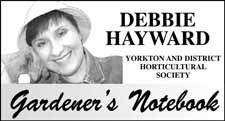My Mom always said that my Grammie always said "You never stop learning." That's so true in life, and very true in gardening. Mom always kept file folders full of gardening articles that she would find in newspapers and magazines. If a certain article was especially interesting, Mom would write "This is very good!" in the margin with a red pen. Looking through one of the folders the other day, I found a fascinating little gem: a plant catalogue for Dropmore Hardy Plants, from Skinner's Nursery, from 1965.
Their 40th Anniversary edition.
The Skinner's Nursery became famous because of the horticultural advances of Dr. Frank L. Skinner. Dr. Skinner has been called "the father of gardening in Manitoba". He was born in Scotland in 1882, and came to Manitoba in 1895. He always loved plants, even as a child, and when the family moved to Canada, to the rugged climate conditions of the prairies, young Frank was ready to brave nature and see what would grow here.
Over the course of his illustrious, self-taught career as a plantsman, Dr. Skinner developed many varieties of fruit trees, as well as roses, lilies, lilacs, and many shrubs. He became famous around the world for the Dropmore Elm. In all, he introduced at least 248 species and improvements on existing plants.
Dr. Skinner died in 1967 at the age of 85. When I read this information, the little catalogue that Mom had in her file became even more important, because this was compiled so close to the end of his life. Turning through the pages of the catalogue, I found all kinds of interesting listings.
For example, under "cherries", there was a variety called "Quebec Cherry" with this description: "this cherry was brought from a Catholic Mission in N. Sask. by A.R. Brown (the Prairie Gardener) and may be a natural hybrid between the black and chokecherry. It is said to have been brought from Quebec by the Fathers, however there is no written record of its origin. Fruit very palatable and makes a very good jelly. Fruit is a reddish-brown in color and comes in compact bunches like grapes." The 40th anniversary price of this plant was $1.25 for a 2-3 foot tree, or three for $3.00.
Under "Dropmore Shrubs", there was this bit of information: "flowers will give the desired finish to your garden and home planting, but the effectiveness of the whole scheme will depend on the choice and variety of trees and shrubs that you select for background and foundation planting. Choose hardy varieties that you can depend on to grow and make thrifty, uniform specimens. The following pages describe reliable and outstanding varieties for form, foliage, bloom, autumn coloring and berried fruits. All grown in our nursery near Dropmore." Some of the varieties mentioned were Amur Maple, Rod Osier Dogwood, Galahad Mock Orange, and Russian Almond, a shrub that my parents grew in their yard for many years.
Many of the varieties may be different now, but the information listed in each section is practical and timeless for any gardener. So don't be too quick to throw old gardening catalogues away! As Mom and Grammie said, you never stop learning!
Have a great week!




